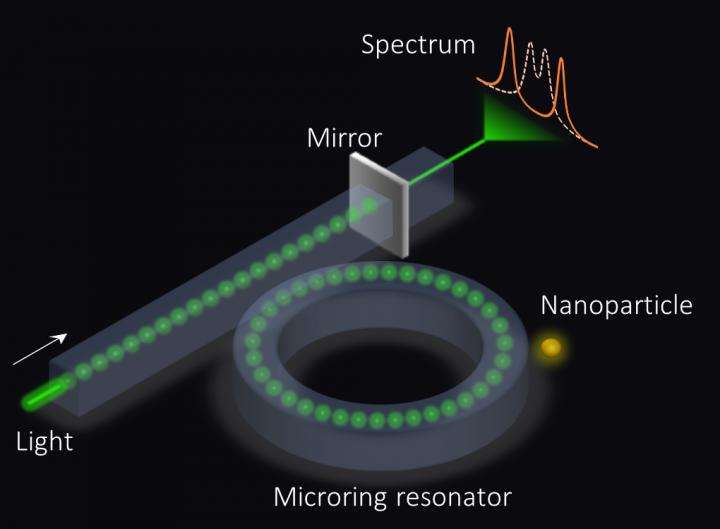 An exceptional surface-based sensor. The microring resonator is coupled to a waveguide with an end mirror that partially reflects light, which in turn enhances the sensitivity. Courtesy of Ramy El-Ganainy and Qi Zhong.
Professor Ramy El-Ganainy said that the same enhanced sensitivity of exceptional point-based sensors is also their “Achilles’ heel.”
An exceptional surface-based sensor. The microring resonator is coupled to a waveguide with an end mirror that partially reflects light, which in turn enhances the sensitivity. Courtesy of Ramy El-Ganainy and Qi Zhong.
Professor Ramy El-Ganainy said that the same enhanced sensitivity of exceptional point-based sensors is also their “Achilles’ heel.”“These devices are very sensitive to unavoidable fabrication errors and undesired environmental variations,” he said. In previous experiments, El-Ganainy and the researchers relied on tuning strategies to control unwanted sensitivity in the EP sensors.
“Our current proposal alleviates most of these problems by introducing a new system that has the same enhanced sensitivity reported in previous work, while at the same time is robust against the majority of the uncontrivable experimental uncertainty,” said researcher Qi Zhong.
The proposed structure exhibits a hypersurface of EPs embedded in a larger space. A large class of undesired perturbations shift the operating point along the exceptional surface, thus leaving the system at another EP, which allows for the robustness of the system. Perturbations due to back reflection or backscattering force the operating point out of the exceptional surface, leading to enhanced sensitivity.
The researchers said that their proposed geometry would be relatively easy to implement using standard photonic components. The design concept could be extended to other physical platforms such as microwave or acoustics.
The research was published in Physical Review Letters (http://dx.doi.org/10.1103/PhysRevLett.122.153902).

